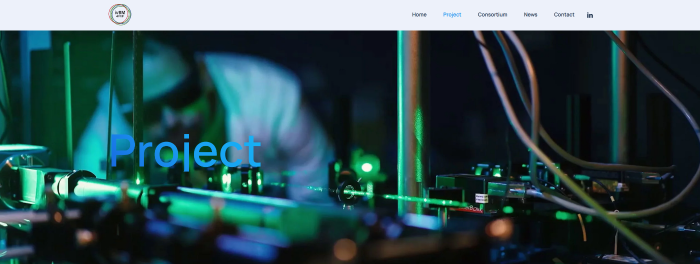- index
- >Projets
- >Projets actuels
- >IVBM-4PAP
Projet de Recherche IVBM-4PAP
Development of an In-Vivo Brillouin Microscope (with application to Protein Aggregation-based Pathologies)
Équipe : Information, Signal, Image et Sciences du Vivant
Labellisation : aucune
Durée : 42 mois ( 01/03/2023 - 31/08/2026)
Financement : commission européenne - Programme HORIZON
Personnels impliqués du LARIS : David Rousseau, Étienne Belin
Partenaires du projet : Fondazione Istituto Italiano di tecnologia – IIT, Università degli Studi di Trento- UNITN, Universidad de Zaragoza, Crestoptics S.p.A.
Lien vers https://ivbm4pap.eu/
Résumé
The role and importance of mechanical properties of cells and tissues in cellular function, development and disease has widely been acknowledged, however standard techniques currently used to assess them exhibit intrinsic limitations (invasive, lack of 3D capability and of sub-cellular resolution). Recently, Brillouin Microscopy (BM), a type of optical elastography, has emerged as a non-destructive, label- and contact-free method that can probe the viscoelastic properties of biological samples with diffraction-limited resolution in 3D. This led to increased attention amongst the biological and medical research communities. However, due to the long acquisition time (hours), this novel technique has been applied only to fixed samples. One important open challenge is to use this approach to follow the mechano-biological processes in living cells and in real time. Aim of our project is overcome the spectral-imaging acquisacknowledged, however standard techniques currently used to assess them exhibit intrinsic limitations (invasive, lack of 3D capability and of sub-cellular resolution). Recently, Brillouin Microscopy (BM), a type of optical elastography, has emerged as a non-destructive, label- and contact-free method that can probe the viscoelastic properties of biological samples with diffraction-limited resolution in 3D. This led to increased attention amongst the biological and medical research communities. However, due to the long acquisition time (hours), this novel technique has been applied only to fixed samples. One important open challenge is to use this approach to follow the mechano-biological processes in living cells and in real time. Aim of our project is overcome the spectral-imaging acquisition time limitation by applying the heterodyne detection scheme, allowing the collection of viscoelastic properties in living sample at a sub-second timescale. We will attempt solving specific physio-pathological open problems in biomedicine for the first time.
Mots-clés
Biomechanics, Brillouin Microscopy, Viscoelasticity, 3D in vivo imaging, Kabuki syndrome, Neurodegenerative diseases, phase transitions.

source https://ivbm4pap.eu/


